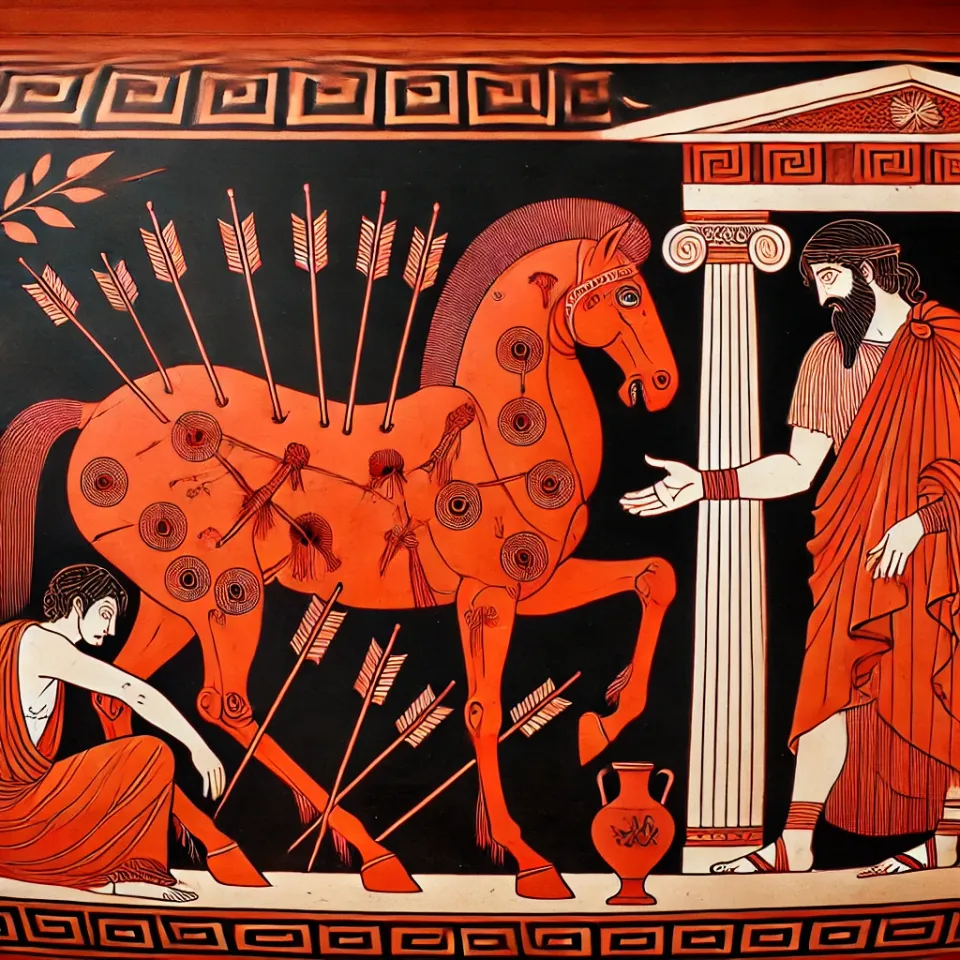Five Fascinating Factoids About Veterinary History

About two years ago, I bought a book titled A Concise History of Veterinary Medicine, because I was writing a book and needed a short section on this exact subject. At 419 pages (including indices), I would say that although it's shorter than War and Peace, the academic density of each page made it feel like anything other than "concise".
When I finally made it to the end, I was surprised by how many stories were actually fun—like, weird, charming, history-nerd fun. So, I pitched a talk to a small veterinary conference, and it was approved for a full hour CE credit. To put that into perspective, the street value of a CE credit for veterinarians is like 2 bottles of unpunctured CereniaTM (maropitant).1
Anyway, I decided to sketch out the entire history of veterinary medicine in a series of... well, sketches. So for each historical epoch, I drew a rough cartoon of what I thought best represented the role of veterinary medicine in history at that point in time. It was a lot of fun to put together, and I hope to bring it to a wider audience at some point.
But while you'll have to register for the Rose City Veterinary Conference if you want to watch the whole thing, I hope the following list of fun facts (along with my previous Ten Titillating Tidbits) convince you that slogging through 419 pages of "Triscuit-in-Tucson" dry academic writing was a worthwhile endeavor.2
1) Bears Win!
Who practiced veterinary medicine first? Well, actually it was the animals who treated themselves–well before humans even got to the scene. In which case, it's not called veterinary medicine (since that's the term for people treating animals). Which is convenient, because the biological phenomenon of animals treating themselves already has a fancy, fifty-pound word, known as "zoopharmacognosy".
2) Disdog Had Distemper?
The actual oldest evidence of possible veterinary care is a dog skeleton from the Upper Pleistocene (14,000 years ago for you playing at home). Because the pup was only about six months old when it died and had dental lesions very typical of distempervirus infection, the authors speculated the animal received nursing care during its critical illness. Which would make veterinary technicians (e.g. nurses) as the earliest known practitioners of veterinary medicine. Which makes sense, becase, c'mon– they're still the ones actually doing anything!
3) That Mythical Time When Horses Weren't Lame
As soon as agriculture got invented and population density increased though, contagion could spread much faster and wider than before, leading to waxing and waning food surpluses and famines. Which ultimately led to warfare. And because the horse was the F-22 supersonic fighter of it's military hay3-day, they became incredibly important to all the famous empires we still read about today. Alexander the Great's favorite horse, Bucephalus, had to be stitched up multiple times by his hippiatros, ancient Greek veterinarians.
4) The First Corporate Internships
The term veterinarian comes from the Roman “veheri” meaning to pull, and designated a person who took care of beasts of burden (oxen and mules). They also called them mulomedicus, which–how hilarious would it be to say you went to the UC Davis School of Mulomedicine?! But both the mulomedicuses and the veterinarians might have been enslaved? Their status as agricultural workers is unclear, because Roman agriculture mostly used slavery. Strangely, this strange ambiguity still exists in many internships and residencies today.
5) The Sultan of Smack-Talk
During the Dark Ages, the western world imposed a lot of “own goals” and collapsed, losing all sorts of important knowledge. Fortunately, Islamic scholars of the time were happy to include previous work in their own treatises. Including a seond-generation court veterinarian by the name of Abu Bakr al-Baytar, who included knowledge from Greece to India in his writings on veterinary medicine. And he apparently loved to diss the methods of his predecessors, something only a Penn grad would do nowadays.
That's it for now! There's a lot more fascinating history that I'd love to share, but when you get paid by the word, and the payment is measured in lost time elsewhere, it's best to sometimes leave some cards on the table. Check out the Rose City Veterinary Conference for the recording, or just stay tuned and eventually I'll come back to this.
- Dear non-veterinary readers: please forgive this joke, it's super fun to veterinary readers, but I am too lazy to explain it to you right now. Fine, I'll have ChatGPT do it:
Cerenia™ (maropitant) is a prescription anti-nausea medication widely used in veterinary medicine, especially in dogs and cats. It’s also... ridiculously expensive. Like, break-the-hospital's-heart expensive. So when vets joke about the "street value" of a CE (continuing education) credit being equivalent to two unopened vials of Cerenia, they're poking fun at how both CE hours and Cerenia are valuable, slightly elusive commodities in daily clinical life. The kind of joke that makes a room full of tired vet professionals chuckle and groan at the same time.
- Please, please–please do your best to appear entertained if I happen to look at you!
- Hay! See what I did there?! Because horses eat... oh never mind.




Comments ()